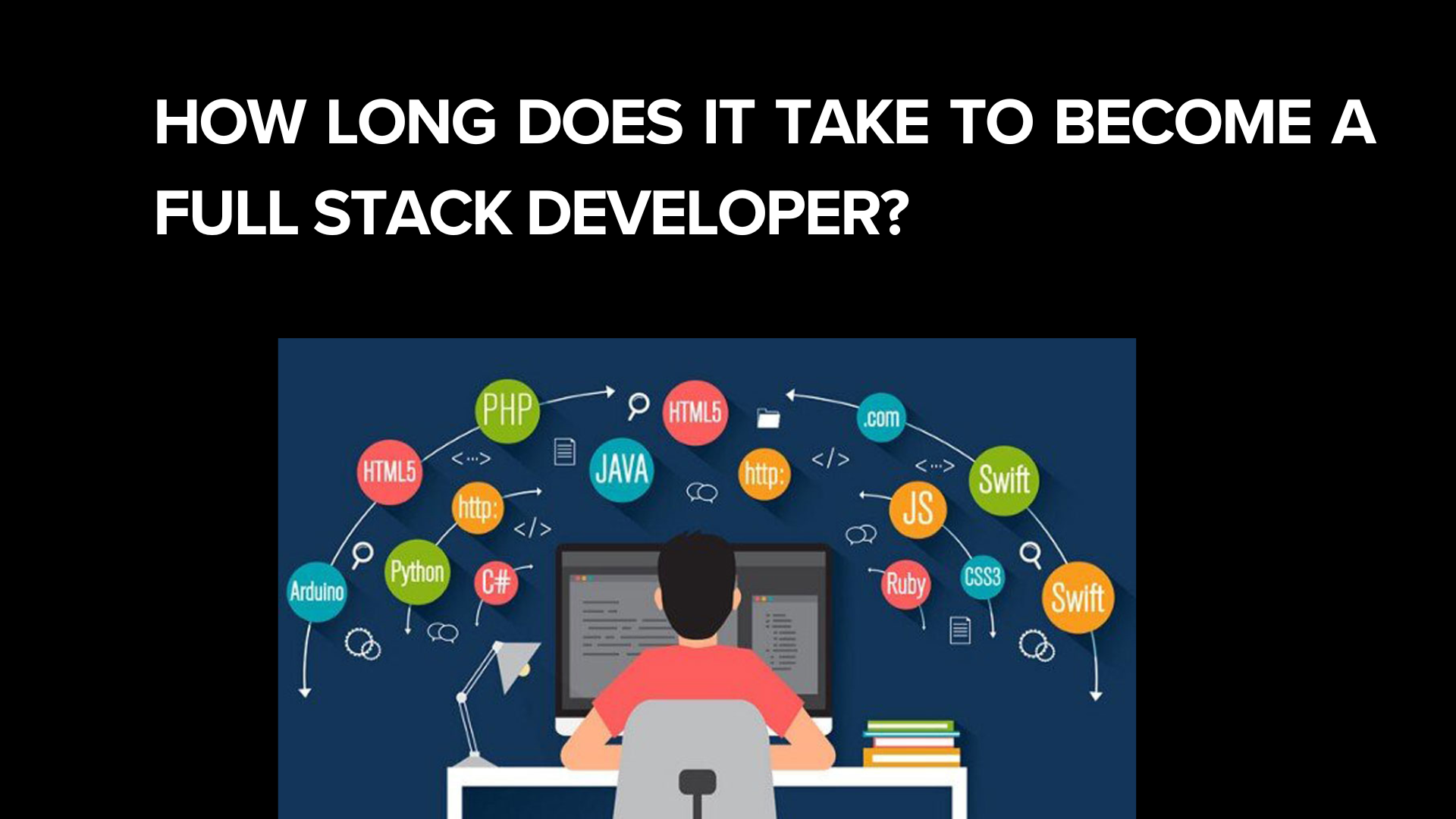How Long Does It Take to Become a Full Stack Developer?
 shakyapreeti
shakyapreeti
Becoming a Full Stack Developer is a journey that requires dedication, consistent learning, and hands-on experience. This comprehensive role involves mastering both front-end and back-end technologies, as well as understanding the entire software development lifecycle. The timeline to become a proficient Full Stack Developer varies greatly depending on several factors, including prior experience, learning pace, and the specific technologies you choose to specialize in.
What Is a Full Stack Developer?
Before diving into the timeline, it's important to understand what a Full Stack Developer does. A Full Stack Developer is a versatile programmer capable of handling both front-end and back-end development tasks. They work on the entire web application stack, which includes:
Front-End Development: Involves building the user interface (UI) and user experience (UX) elements. It includes technologies like HTML, CSS, JavaScript, and front-end frameworks such as React, Angular, or Vue.js.
Back-End Development: Focuses on the server side, managing databases, server logic, and application integration. Key technologies here include Node.js, Python, Ruby, PHP, Java, and frameworks like Django, Flask, or Spring Boot.
Database Management: Handling databases such as MySQL, MongoDB, or PostgreSQL, where the application's data is stored and retrieved.
Version Control: Using systems like Git to manage and track changes in the codebase.
DevOps and Deployment: Understanding how to deploy applications on servers or cloud platforms and maintaining them over time.
The Learning Path The journey to becoming a Full Stack Developer can be divided into several stages, each with its own set of skills to master. Below is a typical roadmap that outlines the learning process:
Understanding the Basics (1-3 months)
HTML/CSS: Learn how to structure and style web pages. JavaScript: Understand the fundamentals of JavaScript, the primary language for web development. Responsive Design: Learn how to create websites that work well on all devices. Diving into Front-End Development (3-6 months):
Advanced JavaScript: Explore more complex JavaScript concepts, such as asynchronous programming. Front-End Frameworks: Pick a framework like React, Angular, or Vue.js and start building interactive UIs. Version Control: Learn Git to manage your code and collaborate with others. Exploring Back-End Development (6-9 months):
Server-Side Programming: Choose a back-end language (e.g., Node.js, Python, Ruby) and learn how to build server-side applications. Databases: Learn how to interact with databases, perform CRUD operations, and understand SQL or NoSQL databases. APIs: Understand how to build and consume RESTful APIs. Integrating Full Stack Skills (9-12 months):
Connecting Front-End and Back-End: Learn how to connect your front-end applications with back-end servers and databases. Authentication & Security: Understand how to implement user authentication, secure your applications, and manage sessions. Deployment: Learn how to deploy your applications to cloud platforms such as AWS, Azure, and Heroku. Specialization and Advanced Topics (12-18 months):
DevOps: Gain knowledge in DevOps practices, including CI/CD pipelines, containerization (Docker), and server management. Performance Optimization: Learn techniques to optimize the performance of your applications. Advanced Front-End and Back-End Frameworks: Explore additional frameworks and tools to enhance your development skills. Factors Influencing the Learning Timeline Prior Experience:
With Programming: If you have prior experience in programming, especially in web development, the learning curve might be shorter. You might already be familiar with some languages or frameworks, allowing you to focus on more advanced topics sooner. Without Programming: Beginners might need more time to grasp foundational concepts like logic, algorithms, and basic syntax before diving into full stack development. Learning Resources:
Bootcamps: Coding bootcamps offer an accelerated path, typically lasting 3-6 months. These intensive programs focus on practical, hands-on learning and often include real-world projects. Self-Study: Learning through online courses, tutorials, and documentation can be more flexible but may take longer. It requires discipline and self-motivation to keep progressing. Formal Education: A degree in computer science or related fields can provide a strong foundation but typically requires 3-4 years. However, it often covers a broader range of topics beyond just full stack development. Practice and Real-World Experience:
Moderate Path (12-24 months): This is a realistic timeline for most learners, especially those balancing other commitments like work or school. It allows ample time to understand the fundamentals, experiment with different technologies, and build a strong portfolio.
Extended Path (24+ months): Some learners may take longer, particularly if they are learning part-time or without a prior technical background. The key is to maintain consistency and continuously build on your knowledge.
Challenges Along the Way Overwhelm: The sheer volume of technologies to learn can be daunting. It's important to focus on one area at a time and not rush the process. Break down your learning into manageable chunks and set realistic goals.
Keeping Up with Trends: Web development is an ever-evolving field. New frameworks, libraries, and best practices emerge regularly. A Full Stack Developer must stay updated with the latest trends and tools, which can be challenging.
Balancing Breadth and Depth: Full Stack Developers need to be versatile, but it’s also important to have a deep understanding of at least one area, whether it’s front-end, back-end, or a specific framework. Finding this balance can take time and reflection.
Conclusion
The time it takes to become a Full Stack Developer varies widely depending on your background, learning resources, and dedication. While it’s possible to gain a working proficiency in 6-12 months, reaching a level of mastery and confidence typically takes 12-24 months or longer. The key is to maintain consistency, practice regularly, and continuously challenge yourself with new projects and technologies. Full Stack Development is a rewarding career path that offers immense opportunities for growth, creativity, and problem-solving. By committing to this journey, you can develop the skills needed to build comprehensive web applications and become a valuable asset in the tech industry. For those looking to enhance their skills, a Full Stack Developer course in Mumbai, Agra, Lucknow, Mumbai, Delhi, Noida and all cities in India can provide the structured learning and guidance necessary to succeed.
Subscribe to my newsletter
Read articles from shakyapreeti directly inside your inbox. Subscribe to the newsletter, and don't miss out.
Written by

shakyapreeti
shakyapreeti
ABOUT I am Preeti, working as a Digital Marketer and Content Marketing.